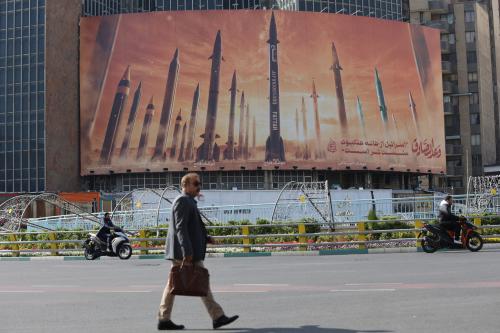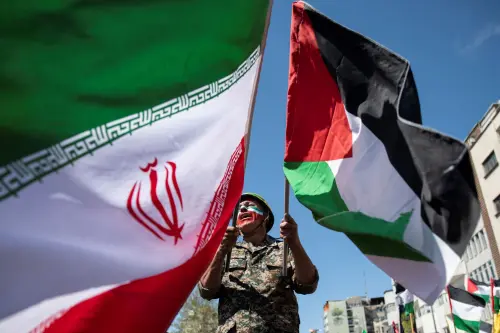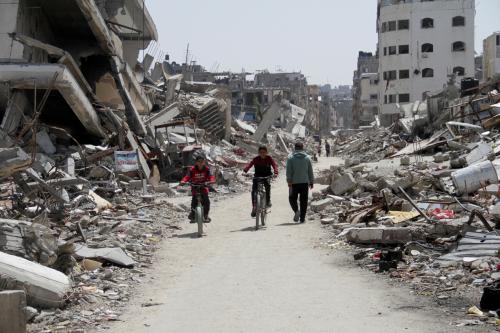Executive Summary
America’s relationship with the Islamic world,
marred by widespread hostility that is manifested
most devastatingly by terrorism, is a liability
that cannot be ignored. In confronting it, efforts to
destroy terrorist groups must be matched by initiatives
that undermine radicalism, raise the standing of the
United States and sap societal support for terrorists.
These must remove reasons for terrorism and the
context within which new recruits are drawn towards
radicalism and violence. Economic and social development
are important to realizing those visions—and
science and technology can make critical contributions
to such development. Nowhere is this sort of
progress more urgently needed than in the Muslim
states and communities that make up the wider
Islamic world. Across a broad swathe from North
Africa to East Asia, the Islamic world—with some
important exceptions—not only lags behind global
standards in economic, human, and political development,
but is even farther behind in developing the
science and technology capacity that can support
sustainable future growth.
Despite widespread and growing public hostility to the
United States in the Islamic world, American science
and technology are widely admired there. This provides
a valuable channel for productive cooperation.
By working wisely with scientists and engineers from
the Islamic world, the United States could bolster
economic and human development and aid in tackling important regional problems like natural resource
management, all while strengthening American public
diplomacy in the Islamic world. To be certain, some
science and technology cooperation, involving certain
sensitive subjects, would be unwise, but a prudent
balance is well within reach.
Only a strategic approach will yield the full potential
benefits of science and technology cooperation, and
the first foundation of that approach is a solid understanding
of the state of science and technology in the
Islamic world. There is no doubt that, even compared
to other states at similar stages of economic development,
states in the Islamic world lag in science and
technology performance. Beyond that, no short summary
can capture the immense diversity of the Islamic
world, as no one country stands out overall. Malaysia
is by far the strongest in applying science and technology
to industry, while the Middle East dominates
in academic publishing, and Central Asia stands out
with its sheer number of scientists and engineers.
At the opposite end of the spectrum, sub-Saharan
Africa trails consistently.Moreover, strong institutions
do exist even within weak states or regions, making
cooperation possible.
Many would be surprised to learn that the United
States already engages this scientific capacity over a
wide range of fields. The US government has taken a
strong lead in this area, working with scientists and engineers in nearly every state in the Islamic world,
either through collaboration with US government
scientists and engineers or by funding cooperative
work outside the government. Prominent participants
include the Department of Defense, Department of
State, the United States Agency for International
Development, the National Science Foundation,
the National Institutes of Health, the Department
of Energy, the Department of Commerce,
the Environmental Protection Agency, and the
Department of Agriculture. Private-sector efforts (by
corporations and non-governmental organizations)
have played a role, too, most prominently through
donations and loans (from the World Bank, for example)
for technological, agricultural, and educational
development, through foreign direct investment in
research and development, through corporate training
programs (promoted by, for example, the World
Business Council for Sustainable Development), and
through the efforts of groups like the US National
Academy of Sciences to build bridges with civil
society. Furthermore, American universities host
thousands of visiting Islamic world scientists every
year. Indeed, perhaps without knowing it, the United
States has built a broad and impressive program
of science and technology cooperation with the
Islamic world.
Despite these various initiatives, there is no coherent
strategy, and with a deliberate effort the United States could do better.While it must be developed in collaboration
with the scientific community, a strategy will
require strong political guidance if it is to be an
integral part of America’s approach to the Islamic
world. The United States should learn a number of
lessons from past attempts at science and technology
cooperation in the Islamic world and elsewhere:
- Focus on applying technology, not just on scientific
research and development.
With technological advancement the goal, research
and development are often not the best focus. In
many states education will be paramount; in others,
the top priority should be to strengthen technologyintensive
industry.Where research and development
are possible, they should form a component of
scientific collaboration. Technology, which leads to
economic and societal development, should come
first, though; research will follow in due course. - The political structure of scientific interactions
matters.
Take care in structuring interactions, whether
bilateral, regional, or spanning the Islamic world.
Initiatives that cover broader areas may seem simpler
and perhaps more cost-effective than bilateral
approaches, but can be crippled by internal
disagreement. They have met with success in some
regions, such as Africa, but have faced greater difficulties
in the Middle East. - Take advantage of Islamic world diasporas.
Many states have strengthened their science
and technology capacity by drawing on their
diasporas—not just their recent emigrants. Many
areas in the Islamic world have substantial scientific
diasporas in the United States, which could act as a
bridge between the United States and their ancestral
homes, and could therefore be profitably involved. - Develop a coordinated public diplomacy strategy.
With such a wide spectrum of activities already
underway, and with broad respect across the Islamic
world for American science and technology, it is
simply negligent for the United States not to promote
its cooperative accomplishments. A public
diplomacy strategy will become even more valuable
as cooperation is intensified. - Be modest in expectations of using science and
technology cooperation to achieve policy changes.
Some have argued that science and technology
cooperation might promote broad reform in Islamic
world societies, through its emphasis on openness
and by building links with the West. This objective
cannot, however, be met by science and technology
alone. The forces that prevent reform are strong,
and will probably be overcome only with similarly
strong tools. Nevertheless, while science and
technology cooperation may not provoke major
changes, it can aid in removing roadblocks
to progress and is an underused tool in broader
US policy. - Create an integrated arms control and nonproliferation
strategy.
For cooperative science and technology to benefit
American security, it must be approached in a way
that does not spread the capacity to make weapons
of mass destruction. During the Cold War, some
major efforts in nuclear technology cooperation did
the opposite. Such a result is not inevitable, but
careful and vigilant strategy and planning, which
address proliferation of both equipment and skills,
are necessary to avoid it.
Within the context of a broader strategy, an expansion
of American efforts will be beneficial. Individual
programs ranging from a government-wide clearinghouse
of science and technology cooperation to the
execution of region-wide science and technology surveys
would also be invaluable, serving as common
foundations of a comprehensive strategy.
Though dollar figures are impossible to propose without
far deeper exploration, there is no doubt that
many opportunities await. In education, in industry,
in research, in diplomacy, and in solving some of the
immediate problems faced in the Islamic world, the
potential of science and technology cooperation is
immense. Fully exploiting it requires political leadership
and must be made an urgent priority.
View Entire Paper (PDF—774KB)


